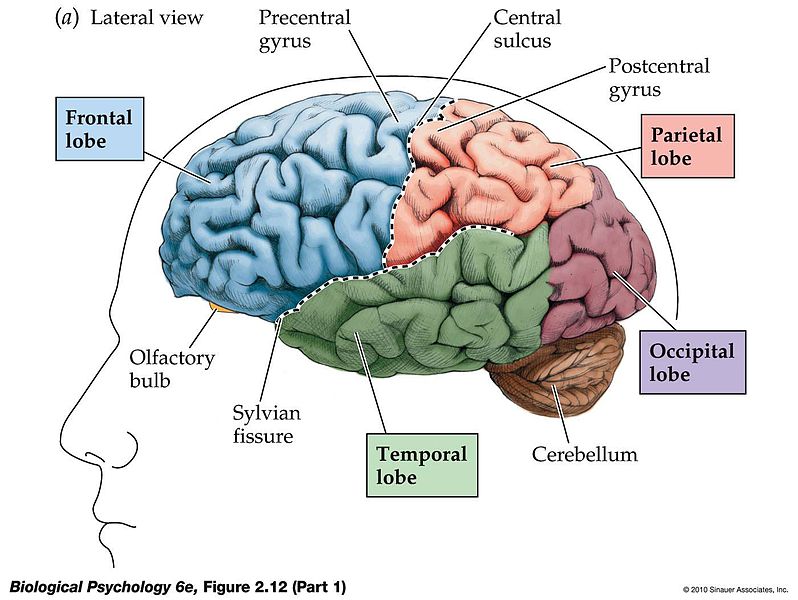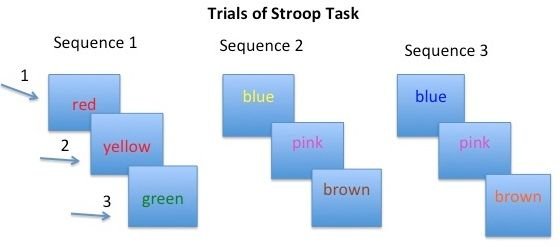Step away from the computer game

Some people can come up with a brilliant idea for a steemit post, then immediately sit down and dig up the required research and reading. Having spent several hours acquiring all the necessary knowledge, they then quickly take a bathroom break, drink a coffee, followed by spending the next three hours writing, editing and finally polishing. After six hours they have their finished article.
If you are one of those people, you are probably very successful and not only on steemit. It also takes me approximately six hours to finish an article, but dispersed throughout those six hours will be something like 12 hours of slowly eating lunch, feeding the cats, meeting a friend, completing some work, playing several hours of computer games to ‘give my mind a short rest’ and maybe a walk or two down to the shops. If you are anything like me you also have some problems with maintaining attention. Some good news though. Recent neuroscience research offers a little direction.
First however, let’s try and answer the question of what exactly attention is. Almost everyone has a fairly good understanding of when they are and aren’t paying attention. Stevens, C., & Bavelier, D. (2012)[1] provide a good quote to illustrate this basic understanding.
“Everyone knows what attention is…” wrote William James in 1890. “It is the taking possession by the mind, in clear and vivid form, of one out of what seem several simultaneously possible objects or trains of thought… It implies withdrawal from some things in order to deal effectively with others…” (James, 1890, pp. 403–404).
Neurological Basis of Attention
Assuming we are highly motivated to pay attention to something, the type of attention we are interested here is known as ‘selective sustained attention span.’ This is when we make a conscious effort to pay attention to something over a relatively long period of time- five minutes or longer. Research suggests that the average person has a limit of approximately 20 minutes to remain focused on something.[3]

An excellent summary of what we understand about attention is provided by Stevens, C., & Bavelier, D. (2012). [1] The part of the brain responsible for controlling attention is the fronto-parietal network. In case you haven’t memorised the different parts of the brain here is a diagram displaying them:

When the fronto parietal network is activated an MRI will show part of the frontal and part of the parietal lobe lit up.
The fronto parietal network controls attention by suppressing neurons giving non-attended to information, and engaging neurons with the best discriminatory power between the attended to and distracting features. This is a dynamic process, our attention strengthens and weakens as our conscious desire to pay attention changes, and as different sensory data arrives. We could be distracted by something external such as two people talking about a party last night. We can also be distracted by internal thought processes, like our desire to check our Facebook to see if our friend has responded to us yet.
We will find it most difficult to filter information when it is very similar to the sensory data we are trying to process, and when it is providing contradictory information. The classic Stroop effect is an example of this. In Stroop (1935) [4]the subjects were given a piece of paper displaying the information in the figure below, and had to say the colour of the word they were reading. Subjects showed a much longer response time when the meaning of the word provided contradictory information, as in sequence two. Another example of this is the difficulty we find in counting when we hear someone counting a different sequence of numbers next to us.

As noted above, most research has been performed on children with ADHD. However a piece of recent research was performed on adults, and provide us with a bit of guidance on how we can maximise our comprehension and memory when paying attention to something like a lecture or a video.
Fenesi et al. (2018)[5] a research paper out just this month, looked at the question of how to maximise attention during a 50 minute video lecture. Their subjects were first-year psychology students. The students were divided into three groups, the first took no breaks, the second took three five-minute breaks to play a computer game, and the third spent the three five-minute breaks doing calisthenics exercises. The results were clear, the third group reported higher levels of attention during the lecture, and also performed better on tests measuring knowledge of the lecture content. The superior test results held both when the tests were conducted immediately after the lecture, and also on delayed tests.
This research was clearly designed around the understanding that our sustained attention will start to flag after around 15-20 minutes.
How can we apply this in our own lives?
Our university lecturers will not be too happy if we climb over the other students to walk out of the lecture every 20 minutes- then come back in five minutes later. However we can apply this when we are studying in our own time. We should take breaks every 15 or 20 minutes to go for a walk outside or do some kind of physical exercise. I remember in the past I used to have the habit of going for a walk when I felt my attention start to wander. Now my preferred method to take a break is to play a computer game! To get the best results from my study I should go back to my previous habit.
REFERENCES
- Stevens, C., & Bavelier, D. (2012). The role of selective attention on academic foundations: A cognitive neuroscience perspective. Developmental Cognitive Neuroscience, 2(Suppl 1), S30–S48.
- James W. Principles of psychology. New York: Henry Holt and Co; 1890
- Sarter, M., Givens, B., & Bruno, J. P. (2001). The cognitive neuroscience of sustained attention: where top-down meets bottom-up. Brain Research Reviews, 35, 146–160
- Stroop JR. (1935). Studies of interference in serial verbal reactions.
J. Exp. Psychol.18:643–62. - Fenesi, B., Lucibello, K., Kim, J A., and Heisz J J. (2018). Sweat So You Don’t Forget: Exercise Breaks During a University Lecture Increase On-Task Attention and Learning. Journal of Applied Research in Memory and Cognition. https://doi.org/10.1016/j.jarmac.2018.01.012.2.
Very Interesting post. Academic. Let me resteem for my future references
I would definitely appreciate a resteem. Thanks for the support
I totally relate to this since taking a break from stressful workload and terriying paperworks is very beneficial for me. I do not want to exhaust myself so whenever Im dead tired I will definitely rest and sleep. I can see that you are very interactive towards comments on this article. Keep up the good work @flyyingkiwi

I am currently in the habit of playing games on my break time. Not a good habit. I'm going to start doing those situps my girlfriend has been pushing me to do!
Great article. You have one more follower. I will resteem this.
Sorry for the late reply, been travelling. Glad you enjoyed the article and thanks very much for the resteem.
Very Educative post and one of my favourite topic. If we analyse the history of 20 years back, we will found that boys & girls are enjoying their time by playing outdoor game also they lived a healthy life. But day by day our young generations are dependent on virtual world. computer, internet, online game, facebook, twitter and other are grasp all of them. They don't think single moment without technology, They don't know the test of outdoor game. It is really important to use the technolgy in a right way and build up good habit by practicing.
Thanks for reading. I know a family that gave their baby an iPad when he was only a year old to entertain him. Now he screams and cries whenever they take it away!
It takes its own kind of dedication to stick to a frequent break plan. 20 minutes fly by so fast. I try to get off the desk once an hour, but without the movement sensor shutting the lights off every hour or so I probably would forget about that too.
Yeah I agree that 20 minutes is really short. I take a break every 45. My experience is that if you are enjoying what you're doing then you can pay attention for longer. If you're trying to memorise some really dry material it probably would be good to go outside and run around the building every 20 minutes
First congratulate you for the dedication and attention in your article; very well structured and documented.
Now in matería content is very timely and relevant to those who venture into this platform (or, in any aspect of our life) as well as you (and many others) the fact of producing a quality article gives us several Obstacles that go from the topic that we will treat, as we will document it and how we will write it; and if you add the daily activities and work responsibilities that each one possesses, it becomes an epic task.
And if you add the lack of attention that each individual can manifest, we reach a point of "impossible mission". In my terms, I believe that knowing the nature of my conflicts and problems can help me generate a strategy to overcome them.
I hope to continue reading material from this level on your part, many successes!
When I am blogging about something I am really interested in I don't really mind if it takes a few hours. It can get a little bit painful correctly writing down all the references and image sources however.
I find nothing gets my brain working again when I start to flag better than a bit of sport in the middle of the day. Nothing beats a lunchtime game of tennnis or squash! Great post, so wonderful to see good science content appearing on here!
That's the sort of habit that I need to get back into. It's so much easier just to tab over onto Facebook. Maybe my next post should be on breaking negative habits!
Taking a time out every 20 minutes is truly a proven measure. But sometimes, you would end up spending too much of time playing the vid game lol. Has happened to me several times.
So then you end up studying for 20 minutes and playing games for 15 minutes. I've been there
exactly.
it takes a level of self discipline to get out of that
Upvoted and followed:) can’t wait to see more. I too am very frustrated about how bad science and biased journalism has formed societies view of the earth and the cosmos and the spirit. The veils are slowly lifting tho, and a new age of reason is coming! Check out the gaiam tv network online for REAL science and truthful researchers:)
I think more people are getting their news online these days. The more established news media is pretty reluctant to challenge the powerful because they want to maintain their access to them. The steemstem community has some really good people so that's one more good news source
playing games is indeed a good past time break, it boost productivity and efficiency from your tiring work, it already proven work without a break is an unproductive habit, many boss nowadays learned about the value of break, and i didn't know every 20 minutes should be a break time after reading your post, i might wanna try it though, :)